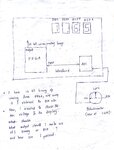KlausST
Advanced Member level 7

- Joined
- Apr 17, 2014
- Messages
- 26,353
- Helped
- 4,926
- Reputation
- 9,875
- Reaction score
- 5,803
- Trophy points
- 1,393
- Activity points
- 177,442
Hi,
What´s the problem with "updating your own drawing" with the requested informations?
I will come back if I see that you - at least try to - do what you have been toold.
Klaus
What´s the problem with "updating your own drawing" with the requested informations?
I will come back if I see that you - at least try to - do what you have been toold.
Klaus




